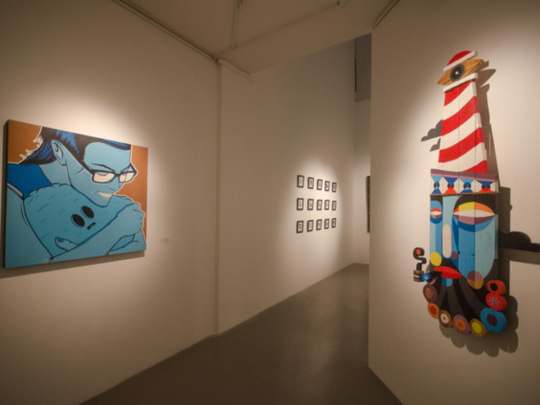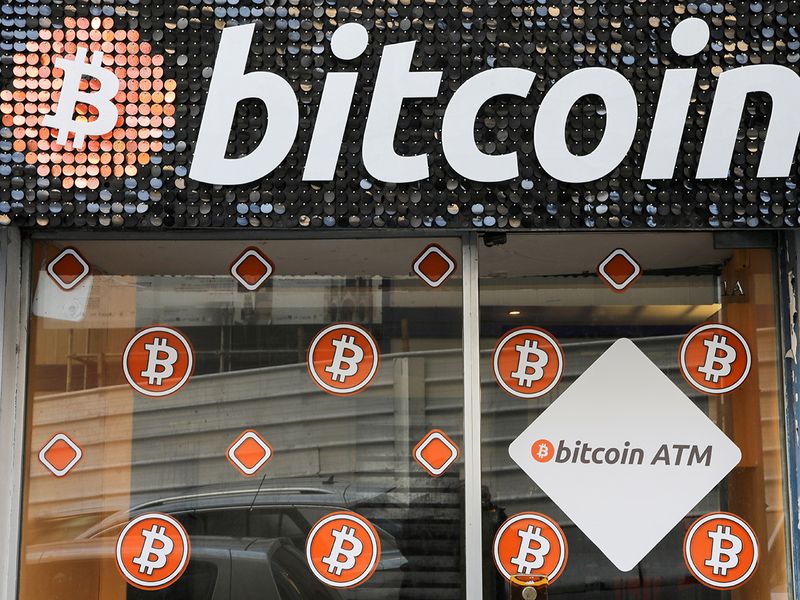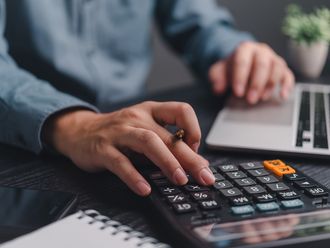
Dubai: Billionaire and millionaire veteran investors who made a huge chunk of their savings buying and selling stocks and bonds often find themselves parking their money nowadays in fine art or priceless paintings.
Some of the popular choices of art include Jasper Johns painting on the wall, Picassos in a bunker at the Geneva Free Port or, famously in the case of renowned US-based hedge fund manager Steve Cohen, a 14-foot tiger shark preserved in formaldehyde by Damien Hirst at the center of a penthouse living room.
Since the 1960s, various names have been used to describe the process, including computer art and multimedia art. Digital art is itself placed under the larger umbrella term - new media art.
But then what is crypto art?
Crypto art is a way of making digital art unique, and therefore, also making it more valuable.
Normally, digital art is very easy to replicate due to the very nature of digital information. So, crypto art is a way of making digital files one-of-a-kind.
Technically, it’s not the art that isn’t replicable; it’s something that’s linked to the piece of art, called an NFT (non-fungible token).
The number is checked against a distributed database updated and shared across a network of computers, also known as a ‘blockchain’. The database is set out in a number of ‘blocks’ of data, each leading sequentially to the next – hence the ‘chain’.
Workings behind digital crypto art
Whenever an NFT transaction occurs - buying or selling - the data is timestamped and then has to be validated across the entire blockchain, which contains a history of every transaction ever made with that specific NFT.
Since the database is distributed, it means there’s no central location where the data can be easily changed; instead, every single computer must agree with every other computer that the transaction is valid.
To put it another way, the blockchain verifies that there is only ever one account capable of owning the NFT at a given time.
An illustration ..
Syed sells a digital crypto art Picasso.jpeg to Khalid, Syed can’t then sell the same Picasso.jpeg (or an exact digital replica of it) to another person Max – the blockchain knows that Syed already transferred the art (and its NFT) to Khalid, so Syed can’t sell it to Max, and will mark the transaction as invalid.
In short, crypto art is digital art that is treated like physical art due to the ability to have verified ownership of the piece. Just like an original painting signed by Picasso can have its authenticity and ownership authenticated, crypto art can be verified in the same way using an NFT or a non-fungible token.
Selling art as NFTs
Imagine that you’re an artist who creates digital images or videos. How do you go about monetising your content? You might sell signed prints or some kind of merchandise online. You could also create a painting, digitise it and then modify it online.
The question then becomes: Which one is the original? Is it the painting, or is it the digital copy that you modified? If a digital copy exists, then is there the original digital copy?
This is where NFTs come into play. An NFT, as mentioned earlier, is basically a smart contract asserting that this digital piece is the original and all the others are just copies. In other words, the NFT consists of your digital artwork plus a contract on blockchain asserting that indeed you created the piece and that it’s the original.
You can then sell this digital original (i.e., the NFT), and it will be registered on the blockchain. If the person who bought from you resells it, that transaction is also noted on the blockchain. You have access to the entire transaction history.
But that’s not the only way NFTs can benefit artists.

NFTs and the secondary market
One unique aspect of NFT-based art that doesn’t really exist in the offline art world is the ability to profit from the secondary market. Offline, once you sell your artwork, it’s gone. You don’t really get anything from it if and when it resells for more.
In the crypto world, however, you can set up a fee (usually between 5 and 10 per cent) that you get each time someone resells your work. So, if you sell your original work for a dollar and then someone resells it for $1 million (Dh3.67 million) in 10 years, you can still get $100,000 (Dh367,300) from it.
This feature is considered the best reason why NFTs are great for content creators. It allows them to focus on making art without as much concern for its initial sale price. If their works become popular, they can start earning significant sums just from the secondary market in the future.
Why the digital art market is booming now?
Following the development of blockchain networks such as Bitcoin and Ethereum in the late 2010s, crypto art grew in popularity in large part because of the ability afforded by the underlying technology for purely digital artworks to be bought, sold, or collected by anyone in a decentralised manner.
With Bitcoin surging more than 400 per cent over the last year and trading near all-time highs, cryptocurrency millionaires’ have been turning to different avenues of investment to park their savings – while the investment value appreciates over time.
Sales of digital art have skyrocketed from $235,000 (Dh863,202) in February 2020 to $63 million (Dh231 million) this month, according to data from Cryptoart.io, which tracks sales across six auction houses worldwide. What’s new in this instance is the art, which like the currencies, has no physical presence.
How can you make money of digital crypto art?
Crypto art, like normal art, varies wildly in price – from the tens of dollars, to the thousands, to the millions.
The value is based upon scarcity, and the fact that the crypto art is not reproducible due to the NFT. Another component is the simple fact that people place value on it.
Just as some cardboard pictures of sportspersons on them are worth thousands because collectors place a value on them usually due to scarcity, in crypto art, its value placed on pixels by collectors.
Some collectors buy crypto art purely for spectating, but others buy the work because they want to support the artist or they feel a connection to the work.

What is crypto art bought and sold with?
An important aspect about crypto art is that it’s bought and sold with a specific type of cryptocurrency called Ether (ETH). Ether is the crypto currency of the Ethereum blockchain that NFTs live on.
While some sites allow you to buy crypto art using credit cards, when you sell it - you’ll always get ETH in return that you’ll have to then convert back into whatever non-crypto currency you want.
Setting up a wallet for crypto art marketplace
When you sign up for a crypto art marketplace, you’ll need to make an account and attach a crypto wallet. You need a crypto wallet because – in order to be able to sell or buy crypto art – you have to have a funding source to withdraw cryptocurrency from or deposit it into.
To start selling, you will need to have your crypto wallet filled with ETH. In other words, you have to have money to sell your crypto art. Everytime you sell a piece, it needs to be tokenised/minted to be able to go on the blockchain.
Gas fees are basically the cost of electricity for all the computers calculating the transaction and tokenizing your work. These gas fees can vary and change at any moment based on computing demand.
Once you sell a piece, you get paid in ETH which will be deposited to your crypto wallet that you connected to the marketplace which you sold your piece. You can then leave that currency in your wallet or transfer your ETH to a cryptocurrency trading website to convert to any other non-cryptocurrency.
Can I get rich with crypto art?
Crypto art is not a get-rich-quick scheme by any means. Most crypto art is only sold for a few dollars or dirhams. In this way, the crypto art world is much like the traditional art world, where it’s dominated by a tiny few that are very successful and make much money off their art.
You may not make much money selling crypto art if you don’t have much visibility. If you had a presence online before crypto art, you have a ready-made following that is probably willing to buy your work.
Is crypto art an investment?
Crypto art almost acts like an investment. So instead of having to be like a company that goes public, crypto artists are people who can be invested in.
It’s kind of like an IPO (initial public offering), except it's based on designers as the entity that’s going public. Another thing to note is that crypto art has a history of appreciating in value each year, on average of around 7 per cent increase per year.








